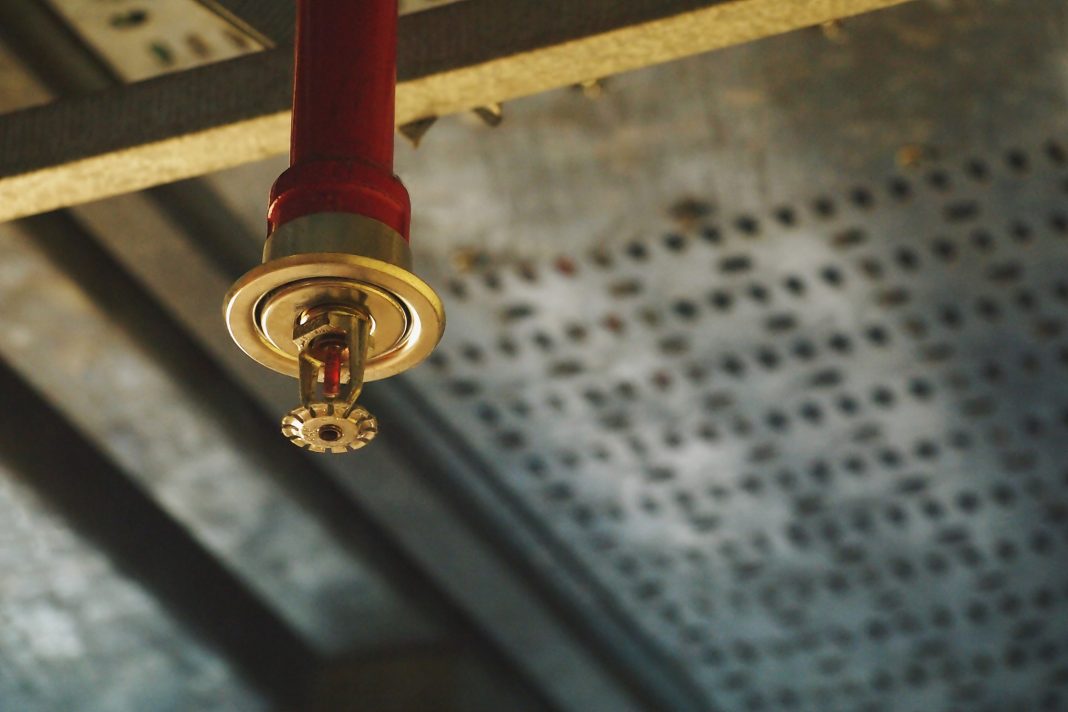Automated fire sprinkler systems are a well-established form of fire protection. However, they are not the only defence, and are by no means a perfect solution, Ian King, COO, Zeroignition explains
In the UK, recent legislation has mandated that sprinkler systems should be included in residential buildings over 11 metres tall. Yet, as it stands, they are not yet a requirement in commercial buildings.
Whilst it’s promising that sprinklers are a part of today’s residential fire safety strategies, I urge the industry to think more holistically, so that every possible improvement to fire safety is considered.
For example, our over-reliance on sprinkler systems could be limiting innovation. Yes, they have a proven track record of suppressing fire, yet for many housebuilders, they are seen as a one-size-fits all solution, which can side line awareness around other products or systems.
Active vs passive protection
The main danger when it comes to fire is its potential to grow and engulf any fuel sources it comes into contact with. To prevent this, professionals within the fire safety industry have developed a range of technologies classed as either passive or active fire protection.
Active Fire Protection (AFP) is a group of systems that require human or computer-based action or motion to protect structures and their occupants in the event of a fire. Common examples include fire alarms and fire blankets. Passive Fire Protection (PFP) contains or slows the spread of fire through elements of the structure itself – fire doors, firewalls, fire retardant protected building products.
Working alone, each individual component only has a limited ability to offer protection. Which is why, to get the most out of them, we must adopt a more holistic approach to their use and view them as part of a larger system. Each element has a role in reducing the spread of a fire. Should one fail, other components in a system will become less effective. For example, if a fire door has not contained a fire, you may not be able to reach extinguishers to put out a blaze.
Sprinkler systems are a relatively unique active form of protection as they are typically designed to be automated. Despite this, human error can still impact their functionality, and this is something we should keep in mind when reviewing their effectiveness.
There is no doubt having a sprinkler system is better than nothing. Yet, we should avoid putting our trust in one defence as there can be complications when evaluating how they are installed, maintained and tested. Especially when current safety checks remain far from watertight.
Sprinkler systems require regular testing
Sprinkler systems must be maintained to ensure the safety of occupants and protect the building’s structure. Every sensor must be functional and free from obstruction or electrical faults, otherwise they risk malfunctioning when needed. While sprinkler systems are an automatic form of fire protection, we must keep in mind that this relies on human knowledge and proactive intervention to ensure their upkeep.
According to the FPA, only 20 sprinkler heads out of every 5,000 are required by law to be checked. Imagine if less than 1% of all fire exits, which need to be clear of obstructions, were never inspected. What of the rest? These odds are not good enough when lives are at stake, and there should not be any exceptions when it comes to sprinkler systems.
Due to the extensive work needed to install sprinklers, a system can also become an expensive investment. Maintaining water at high pressure and operational energy likewise incur additional costs. This price tag is unavoidable, but in comparison to the price of a fire, it is always money well spent.
Yet, if sprinkler systems are to be relied upon, we must ensure that individuals and companies are held accountable, and that regular testing is carried out, as paramount.
Tracking sprinkler system reliability
Research by The National Fire Chiefs Council (NFCC) showed that when sprinklers operate, they are effective 99% of the time.
Despite the encouraging data, sprinklers are still active fire protection systems, and there is a human factor to consider in their operations. According to the NFPA, most sprinkler failures are due to human error when systems are shut off before fires. In addition, the NFCC has reported over 1,000 ‘failures to operate’ from 2011 to 2016 in a business setting, accounting for 82.6% per cent of sprinkler system failures.
The message here is that sprinkler systems are a very reliable solution if installed and maintained properly. Again, this active form of fire protection is only as good as the individuals servicing and testing them, and the legislation that binds them. It is far too easy for us to fall into the trap of thinking that sprinklers are our only form of defence and that by having them in place, we are always fully protected.
Exploring new technologies
This limited mindset also hinders industry experts from exploring new avenues and developing different technologies to tackle fire.
Fortunately, scientific advances have allowed researchers like our team here at Zeroignition to explore new, more efficient ways to protect materials against fire. I believe in the use of passive products like fire retardants in engineered wood, coatings, insulation and facers, alongside active traditional systems like sprinklers to aid the defence against fire within construction.
Nobody wants to see safety side lined to save time and money. Yet, the harsh reality of our industry is that fire safety can sometimes be treated as a tick box exercise. By combining passive and active suppression methods within the context of a wider system, leaders within the construction industry can help improve standards across the board. Without this change, more and more lives will be put at risk.
Ian King

COO
Zeroignition

















